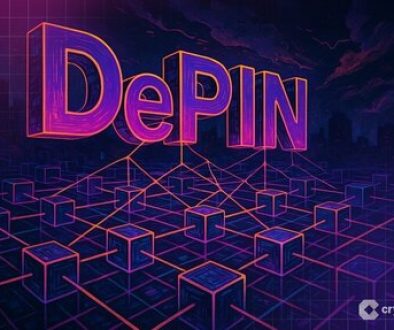What DeepSeek Signals About Where AI Is Headed
(HBR)-06/02/2025
DeepSeek’s launch of its R1 model in late January 2025 triggered a sharp decline in market valuations across the AI value chain, from model developers to infrastructure providers. Investors saw R1, a powerful yet inexpensive challenger to established U.S. AI models, as a threat to the sky-high growth projections that had justified outsized valuations. For those who have been paying attention, however, the arrival of DeepSeek — or something like it — was inevitable.
Even so, this is a useful moment to reflect on where AI is headed. Rather than understanding DeepSeek’s R1 as a watershed, it’s more useful to see it as a signal of where we really are right now — and a harbinger of what’s to come.
Here are five lessons that business leaders should take away from this moment.
From Pattern Recognition to Problem Solving
Large language models stole the show in 2023 and 2024, but in 2025 we will stand in awe of AI systems that can reason, plan, and operate autonomously. That’s because two related trends will dominate the AI landscape this year: the rise of reasoning models and the arrival of AI agents that are ready for prime time. These capabilities heavily rely on reinforcement learning (RL), which is a method to train an intelligent agent to make a sequence of good decisions. Think of it like learning to play a video game. When you hit a bullseye or jump over a wide ditch or guess a word, you earn points. As you play, you learn to perform actions that are rewarded.
The last generation of models like GPT 4 were amazing pattern matchers — they pre-trained on vast quantities of information, contextualized it all, and blew us away with their uncanny next-word predictions to respond to our prompts.
DeepSeek R1 is a free-to-all reasoning model — as are OpenAI’s just-released ChatGPT o3-mini and Microsoft’s Copilot o1 models. These models represent a crucial shift from uncertain next word prediction to methodical problem solving that heavily relies on RL. Reasoning allows them to perform certain tasks much better than prior models, like solving math problems. Think about trying to multiply two large numbers. Most people can’t look at them and guess the answer — they need to pull out pencil and pad, break the problem into steps, and work it through. Reasoning models can increasingly do this, too.
With the capability to break down and reason through problems, AI agents are able learn to dynamically navigate complex workflows, adapting to new information as it arises in the process of task completion, rather than being limited to rigid, predefined scripts. This is just what humans do in our work, such as when customer service agents respond to queries, admin employees create schedules and plan travel, and when data analysts collect information, analyze it, and write a report.
AI’s Economic Inflection Point
One of the big headlines around DeepSeek R1 is its reported development cost of $5.5 million. That figure is misleading. It likely only reflects the cost of a single training run, excluding infrastructure, engineering, and deployment expenses. A total figure that included those expenses would be much higher — though still significantly lower than the estimates of the development costs for OpenAI, Anthropic, Google, and other models R1 is competing against.
Instead of focusing on these numbers alone, we should be paying more attention to inference costs — the expenses associated with actually using models after they’ve been trained. Training requires substantial upfront investment, but inference costs are crucial for enterprise applications. DeepSeek R1 and other recent entrants, including Meta’s Llama series of models, represent large reductions in these expenses. As a rule, falling prices tend to spur competition and drive user adoption. Just think about the drop in performance-adjusted prices in markets for all electronic products — smartphones, television sets, laptops — driven by efficiency gains in semiconductor production. This is Moore’s Law propelling price drops and higher adoption rates of far too many end products to name. The same is happening in AI.
Open-Source and Proprietary AI Will Coexist
One reason we should have expected a development like DeepSeek R1 is the basic economics of open-source software. Historically, open-source projects have challenged proprietary solutions by significantly reducing costs, such as Unix/Linux in enterprise computing, Android in mobile OS, MySQL in databases, and, of course, Llama in AI. The cost advantage of open-source software is well-documented. It is predictable that AI would follow a similar trajectory.
In AI, proprietary models from companies like OpenAI, Alphabet, and Anthropic remain at the cutting edge in multimodal capabilities, security (it appears to be easy to jailbreak DeepSeek R1), and other benchmarks. Even so, open-weight models like DeepSeek R1 have closed the gap in text-based reasoning and the model is incredibly efficient. The potential for enterprise use cases of the model are reflected in Microsoft’s overnight decision to integrate DeepSeek R1 into Azure. Because of their lower costs and greater flexibility, open models like DeepSeek R1 will be very attractive to users. So will a host of small language models, like Microsoft’s Phi-4, which have demonstrated strong performance in many use cases.
For now, it looks like we can expect a market structure with a diverse array of players, versus a winner-take-almost-all scenario.
Silicon Scarcity Drives Algorithmic Innovation
Another part of the reaction to DeepSeek R1 has centered on the “surprising” news that China appears to have closed the gap on the U.S. in frontier AI models. U.S. export restrictions were meant to limit Chinese access to the most advanced semiconductors and help preserve American companies’ lead in AI research. (Some argue this only reinforces the need for such controls.) The fact that this approach hasn’t completely succeeded should not be a great surprise. Remember the old adage, necessity is the mother of invention? The silicon constraints have led Chinese researchers to prioritize algorithmic efficiency over raw compute power — a strategy that could prove prescient as data center energy consumption explodes. But this fact — and the elegance of the algorithmic research done in China — has been true for some time. China’s LLM landscape has been rapidly growing with 117 LLMs available for public use last year. Despite strict constraints on training data and on outputs, quite a few Chinese LLMs are competitive on global leaderboards, particularly excelling in Chinese-language tasks. The AI talent pool there is exceptional; DeepSeek itself has an extremely innovative research team, and the depth of AI talent in the nation is vast.
DeepSeek R1 Didn’t Change Everything
All of this said, the major AI labs and the hyperscalers in the West — including Microsoft, Meta, Alphabet, and Amazon — will continue to invest at dizzying levels, ensuring that demand for state-of-the-art GPUs and AI infrastructure will remain high. Open models will not completely replace proprietary ones, and we are likely to see immense computational resources consumed in model training and inference. As a result, the neck-and-neck sprint for the most capable AI systems will continue to fuel demand for high-performance chips and large-scale cloud infrastructure, despite that investment costs now vastly outstrip revenues for many players in the industry.
In addition, the big infrastructure buyers in the West are undoubtedly concerned about supply risk, since the majority of advanced semiconductors are manufactured in a TSMC facility located in Taiwan. Given the tension in U.S.-China relations and Taiwan’s strategic value, major buyers in the West are likely thinking about stockpiling compute power.
The pace of AI advancement — as well as the social and economic importance of this set of technologies — arguably has no historical precedent. With reinforcement learning enabling breakthroughs in reasoning models and AI agents, which will in turn lead to countless new applications, 2025 will be packed with “DeepSeek” moments. Expect continuous advancement, increasing real-world use cases, and the true beginning of a seismic-scale reshaping of the economy.




